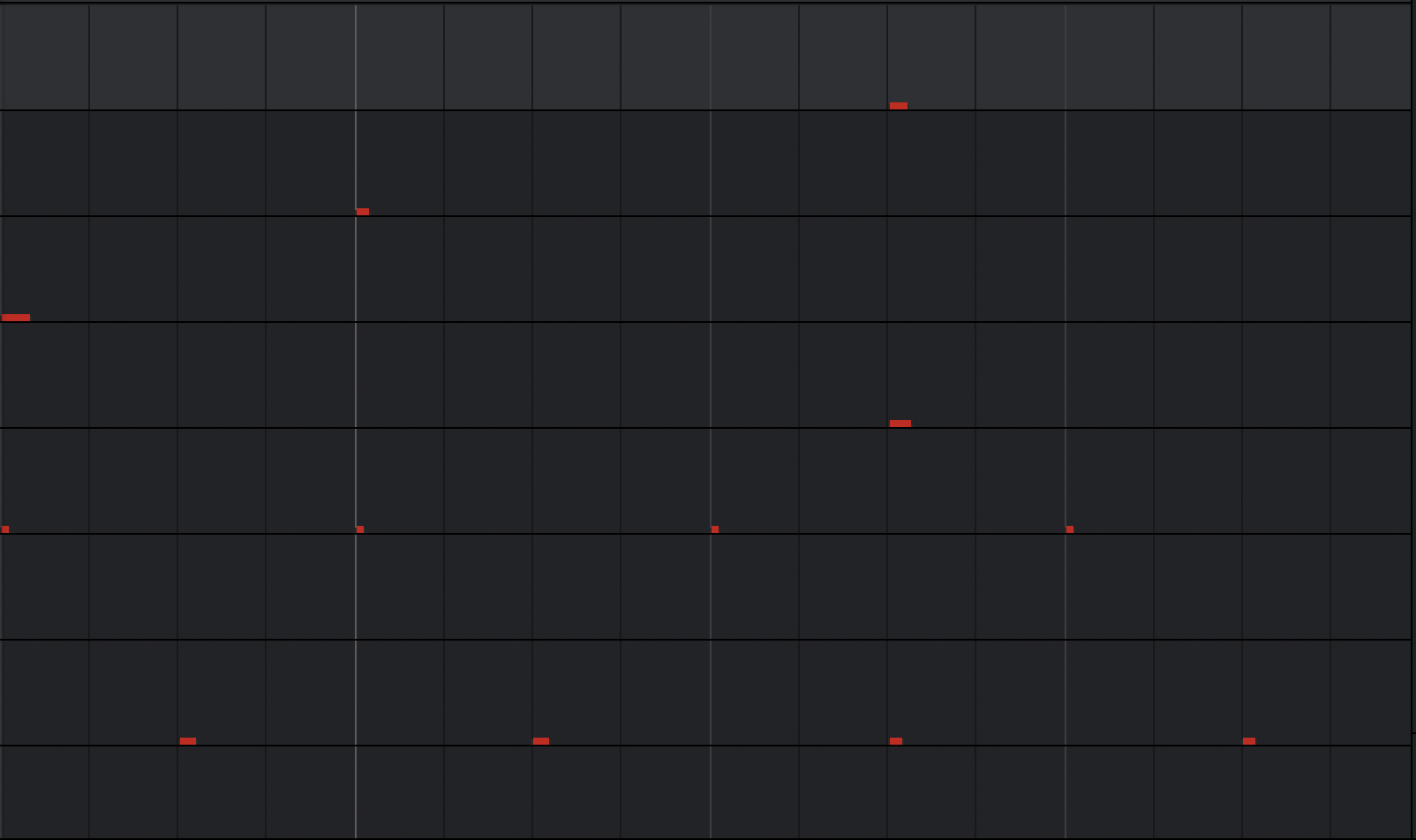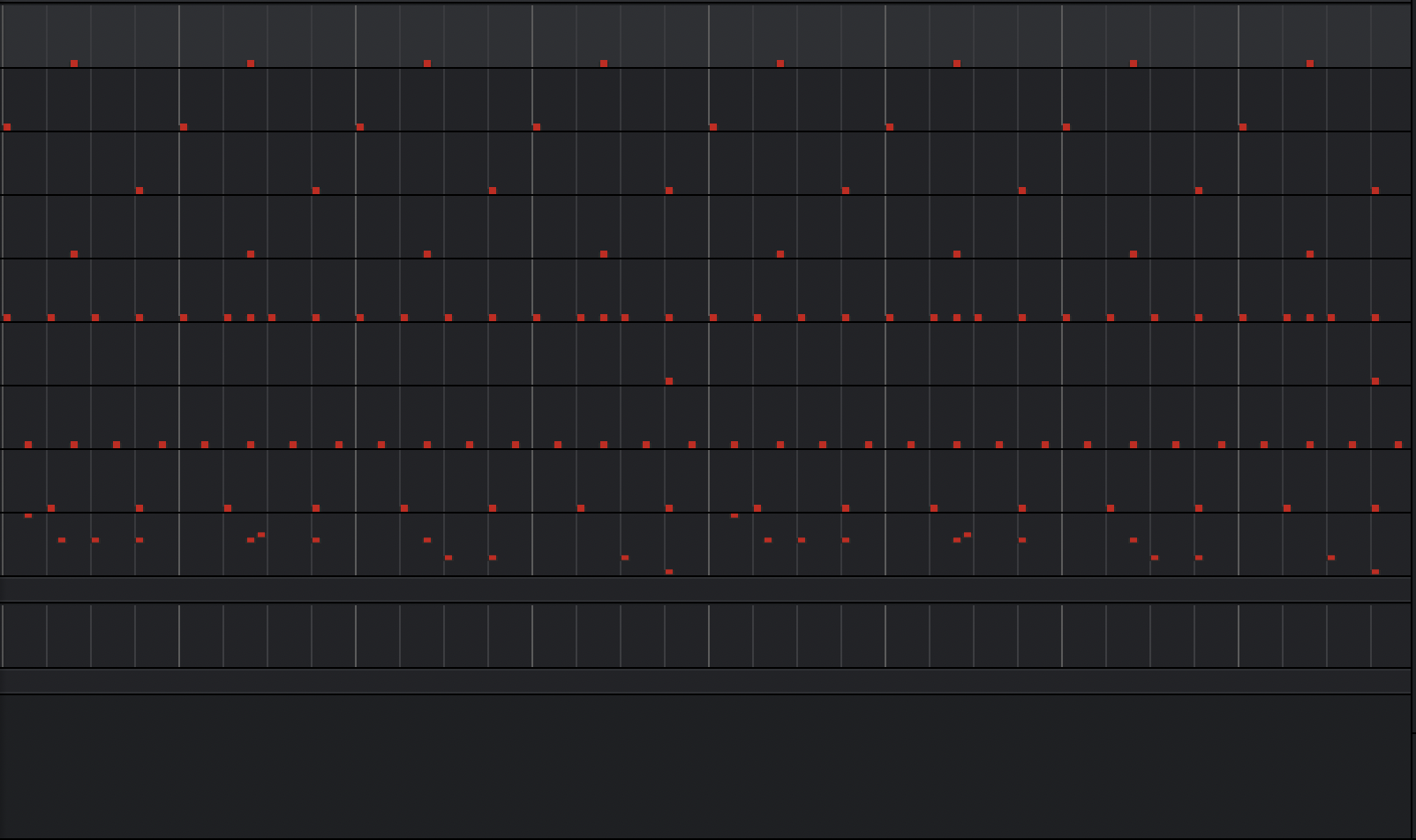Experiment: Step Sequenced Patterns
After working on several explorations and also engaging with the weavers I’ve worked on this project with. It became clear how being intentional was key to the shaping and construction of Kente. The weavers voice and touch should be seen in the cloth’s existence. More recent conversations I’ve had with weavers have touched on this more than ever. Their perception of the cloth isn’t one of randomness, it’s a very precise and delicate art. Nonetheless, this made me even more aware of the sound expelled during the weaving process as very precise also. However, no matter how meticulous the weaver can be, the sounds are never the same and this makes the sounds also very unique in nature, just like music.
This understanding prompted me to focus on reverse engineering this process by focussing on making intentional sounds to come up with somewhat ‘random’ visuals. Here, just as I did in my early experiments with Logic Pro’s visual interface, I’m looking more closely at step sequencers, specifically that of the Akai MPC Live. This portable production station has been my primary space for chopping up the recorded samples I obtained. It has also been the my work station for producing the samples into beats by adding other elements as well. All these beats could be viewed as sequences in the interface, and the sequences have mapping grids that could be customized to be identical to that of Kente cloth dimensions.
For this experiment my goal was to create beats sequences that informed specific cloth patterns. The added layer to this experiment was to make these ‘cloths’ with repurposed paper. This experiment was much more fulfilling because, I got working with my hands and also started thinking more about what each cloth, combined with different elements like photographs among other motifs could mean. While still keeping sound as the ultimate driving force.
My starting point for this experiment focused on technique. I tried different ways, to weave together the paper I found, and it was interesting to see how the process I had broken my explorations into – Technique, Materiality and Context, were informing this experiments almost on its own. I didn’t actively have to think about doing this in order to apply it.
My next steps were informed by the beats I had made. I looked closer at at the sequences and their grid, and used the parts filled with sound to be moments where motifs appeared. It was at this point where I felt the combination and relation of rhythm and visuals. They were informing each other and still leaving traces of memory in the work I was making. Further, I could see how this visual output created could also be repurposed to come up with different beats, if different sounds were applied.
_
May 26 2021










